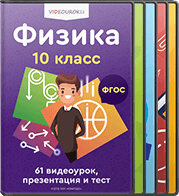The objectives: To speak about education and schools in Great Britain. To develop pupil’s speaking, listening.
The type of the lesson: New lesson
Recourses used: Cards, English book, video, pictures.
Lesson plan
Warm up: Good morning, pupils! How are you? Who is on duty today? Who is absent? What day is it today? What is the weather like today?
Homework monitoring: What was your home task? Who is ready?
Presentation : Today we are going to speak about education and schools in Great Britain.
Practice in speaking
Ex 1, on page 115. Read about the text “Schools in Great Britain”, then translate the text.
“Schools in Great Britain”
In Great Britain children start going to school when they are five and continue studying until they are 16 or older. Compulsory education begins at the age of five when children go to primary school. Primary education lasts for six years. First they attend the infant school from five to seven.
In infant schools children don’t have real classes. They get acquainted with the class – room , desks, play and learn through playing. They learn numbers and how to add them.
When the children are seven they go junior school which they attend until eleven. Boys and girls study at junior school for four years. There they have classes, read and write, do mathematics. Then they go to secondary school.
At secondary school pupils study English, Mathematics, Science, Geography, History, Art, Music, Foreign languages and Physical training.
There are some types of secondary school in Great Britain. They are grammar schools, modern school and comprehensive schools. One can attend modern school but pupils of a modern school don’t learn foreign languages.
If they go to grammar school they will have a good secondary education. This type of school is most popular in England. At secondary schools pupils study English, Mathematics, Science, Geography, History, Art, Music, Foreign languages and Physical education. English, Maths and Science are called “core” subjects. Pupils take examinations in the core subjects at the age of 7, 11 and 14.
They are some private schools in England. Boys and girls do not study together at these schools. The sons and daughters of these aristocracy go to these schools. The teachers of these schools pay personal attention to each pupil.
It may be strange for you to know that English pupils have school uniform. It is an old tradition in the country. A boy’s uniform consists of a special suit, a school cap, a tie and blazer. A girl’s uniform consists of a hat, a coat, a skirt and a blouse. As usual their uniform is dark.
As you have just read British education has many different faces but one purpose. Its purpose is to develop pupils’ abilities and prepare them for life in the modern world.
Ex 2, on page 116. Answer the questions.
When do children start going to school in Great Britain?
When does compulsory education begin?
How long does primary education last?
What do children do infant schools?
When do children go to junior school?
How long do they study at junior school?
What do pupils study at secondary school?
What are the types of secondary in England?
What type of secondary school will you choose if you in England ? Why?
What are the “core” subjects/
Who goes to private schools?
Would you like to have school uniform/
Practice in writing
Ex 4, on page 116. Complete the sentences on the basis of the text.
Compulsory education in England begins at the age of five when children go to primary school.
Primary education lasts for six years.
When children are seven they go to junior school which they attend until eleven.
One can attend modern school but pupils of modern school don’t learn foreign languages.
English, Maths and Science are called “core” subjects.
A boy’s uniform consists of a special suit, a school cap, a tie and a blazer.
Evaluation: Today you were very active.
Home task:
Ex 5, on page 116. Correct the sentences.
In Great Britain children start going to school when they are seven.
Compulsory education begins at the age of seven.
Primary education lasts for five years.
In infant schools children learn how to write and read, and do mathematics.
Boys and girls study at junior school for six years.
If they go to grammar schools they will not have a good education.
Modern schools are most popular in England.
German, History and Science are called “core” subjects.
Boys and girls study together at private schools.
Conclusion: Have you got any questions? What have you known today? Our lesson is over! Good bye!

 Получите свидетельство
Получите свидетельство Вход
Вход












 Урок английского языка "Schools in Great Britain" (15.94 КB)
Урок английского языка "Schools in Great Britain" (15.94 КB)
 0
0 4316
4316 1414
1414 Нравится
0
Нравится
0


